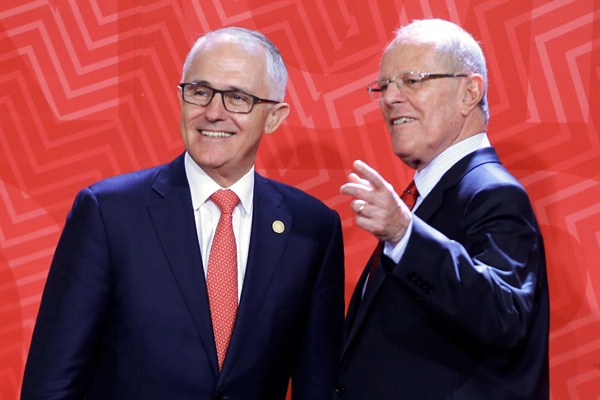On Nov. 10, Australia and Peru concluded a free trade agreement while leaders of both countries were attending the Asia-Pacific Economic Cooperation summit in Vietnam. Free trade negotiations between the two countries began in May following the U.S. decision to abandon the Trans-Pacific Partnership, the major multilateral free trade deal that involved 11 other Pacific Rim countries, including Australia and Peru. In an email interview, John Edwards, a nonresident fellow at the Lowy Institute and adjunct professor with the John Curtin Institute of Public Policy at Curtin University, explains why Australia and Peru moved forward with their own free trade agreement, how its terms differ from those of the TPP, and which industries stand to gain and lose from the deal.
WPR: Australia does not count any Latin American countries among its top 10 trading partners. Why did it decide to sign a free trade agreement with Peru, and what does this move signal about Australia’s trade outlook?
John Edwards: Though useful in its own right, Australia’s new free trade agreement with Peru, known as PAFTA, was sought as a convenient, achievable and exemplary piece of salvage from the wreck of the Trans-Pacific Partnership, which was sunk in early 2017 by the incoming Trump administration. Both Peru and Australia saw considerable value in the TPP, and both wished to put on record the kind of quality provisions it contained by way of an example of what might have been achieved—and may one day still be achieved if the U.S. returns to the negotiating table on multilateral agreements. Canada’s reluctance to sign on to a “TPP minus the U.S.” at the APEC leaders’ summit in Vietnam earlier this month was another reason for Australia and Peru to promptly conclude the PAFTA.

